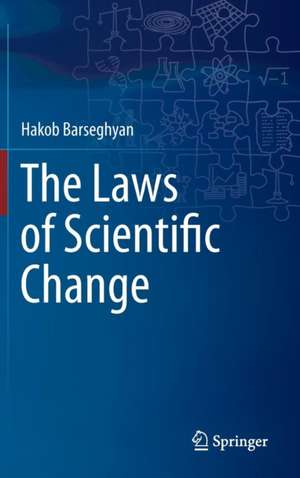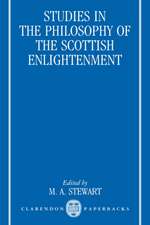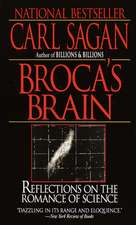The Laws of Scientific Change
Autor Hakob Barseghyanen Limba Engleză Hardback – 26 aug 2015
Contrary to the widespread opinion, the book argues that scientific change is indeed a law-governed process and that there can be a general descriptive theory of scientific change. It does so by first presenting meta-theoretical issues, divided into chapters on the scope, possibility and assessment of theory of scientific change. It then builds a theory about the general laws that govern the process of scientific change, and goes into detail about the axioms and theorems of the theory.
| Toate formatele și edițiile | Preț | Express |
|---|---|---|
| Paperback (1) | 387.96 lei 6-8 săpt. | |
| Springer International Publishing – 22 oct 2016 | 387.96 lei 6-8 săpt. | |
| Hardback (1) | 395.25 lei 6-8 săpt. | |
| Springer International Publishing – 26 aug 2015 | 395.25 lei 6-8 săpt. |
Preț: 395.25 lei
Nou
Puncte Express: 593
Preț estimativ în valută:
75.63€ • 79.18$ • 62.58£
75.63€ • 79.18$ • 62.58£
Carte tipărită la comandă
Livrare economică 05-19 aprilie
Preluare comenzi: 021 569.72.76
Specificații
ISBN-13: 9783319175959
ISBN-10: 3319175955
Pagini: 175
Ilustrații: XVI, 275 p. 123 illus., 63 illus. in color.
Dimensiuni: 155 x 235 x 22 mm
Greutate: 0.59 kg
Ediția:1st ed. 2015
Editura: Springer International Publishing
Colecția Springer
Locul publicării:Cham, Switzerland
ISBN-10: 3319175955
Pagini: 175
Ilustrații: XVI, 275 p. 123 illus., 63 illus. in color.
Dimensiuni: 155 x 235 x 22 mm
Greutate: 0.59 kg
Ediția:1st ed. 2015
Editura: Springer International Publishing
Colecția Springer
Locul publicării:Cham, Switzerland
Public țintă
GraduateCuprins
Acknowledgements.- Introduction.- PART I: METATHEORY.- Chapter 1: Scope.- Chapter 2: Possibility.- Chapter 3: Assessment.- PART II: THEORY.- Chapter 4: Axioms.- Chapter 5: Theorems.- Conclusion.- Appendix: Some Open Questions.- Bibliography.- Legend.
Notă biografică
Hakob Barseghyan is professor of the history and philosophy of science at the University of Toronto. Hakob laid the foundations of the general descriptive theory of scientific change
Textul de pe ultima copertă
This book systematically creates a general descriptive theory of scientific change that explains the mechanics of changes in both scientific theories and the methods of their assessment. It was once believed that, while scientific theories change through time, their change itself is governed by a fixed method of science. Nowadays we know that there is no such thing as an unchangeable method of science; the criteria employed by scientists in theory evaluation also change through time. But if that is so, how and why do theories and methods change? Are there any general laws that govern this process, or is the choice of theories and methods completely arbitrary and random?
Contrary to the widespread opinion, the book argues that scientific change is indeed a law-governed process and that there can be a general descriptive theory of scientific change. It does so by first presenting meta-theoretical issues, divided into chapters on the scope, possibility and assessment of theory of scientific change. It then builds a theory about the general laws that govern the process of scientific change, and goes into detail about the axioms and theorems of the theory.
Contrary to the widespread opinion, the book argues that scientific change is indeed a law-governed process and that there can be a general descriptive theory of scientific change. It does so by first presenting meta-theoretical issues, divided into chapters on the scope, possibility and assessment of theory of scientific change. It then builds a theory about the general laws that govern the process of scientific change, and goes into detail about the axioms and theorems of the theory.
Caracteristici
Shows how science works and how its theories and methods change Is the first to build a general theory on scientific change of both theories and methods Clarifies the distinctive pattern behind seemingly disparate historical episodes Explains a myriad of aspects of the history of science Poses many interesting questions for future research




















